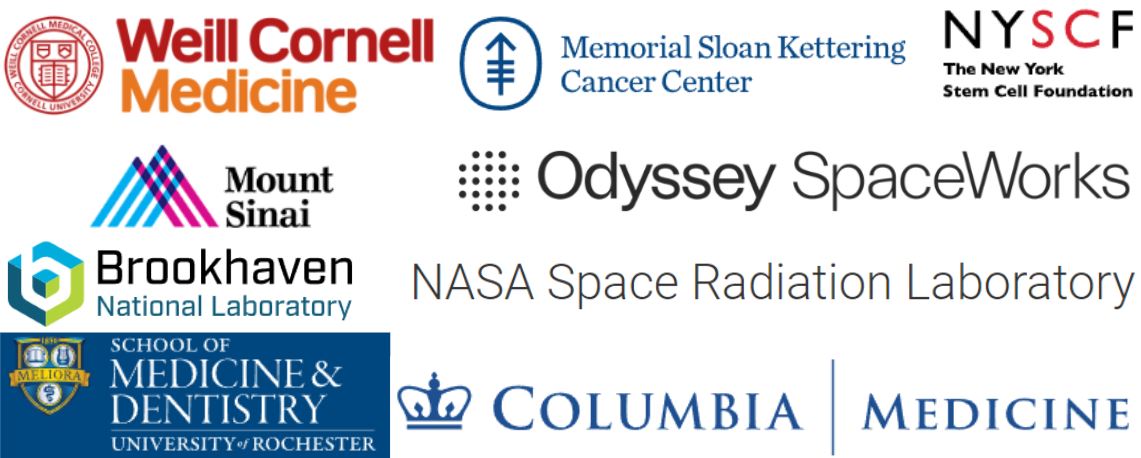
There are numerous connections within the New York space ecosystem to these broader advances in the field of space medicine. These connections often leverage New York’s world-class academic institutions to pursue cutting edge research in the field of space medicine. Space medical research is a rapidly growing industry that is responsible for a growing amount of high-quality jobs, while also generating spin-off benefits that benefit terrestrial patients and medical providers.
Key questions of medicine and biology will play central roles in 21st century space exploration. Protecting astronauts from lethal space radiation, understanding the biological implications of long-term exposure to microgravity, or even hunting for habitable zones on other planets, are some of the key space medicine and biology questions of our era. Scientists, doctors, and medical researchers from the Empire State are going to be at the heart of the answers.
Odyssey SpaceWorks
Odyssey SpaceWorks is an innovative Brooklyn-based company with the motto “Biology….In Space” that has developed a “satellite based lab platform (that) enables faster development, optimized performance, and lower costs for Pharma, Cosmetics, Wellness, Ag, Industrials, Ingredients, and beyond,” (Odyssey SpaceWorks).
Their platform has flown in space, with the maiden flight occurring in November of 2023 aboard SpaceX’sTransporter-9 mission. The benefits of space-based medicine research and development is clear, according to Odyssey SpaceWorks “Space-grown organoids are faster forming, and longer-lasting…4 months in space is the equivalent of a decade of aging for certain tissues…Our hardware allows teams to fast-track their innovations.” The potency and importance of these space medicine platforms could not be more clear.
Odyssey SpaceWorks has also partnered with other New York institutions such as the Memorial Sloan Kettering Cancer Center to advance their work and root as much of it as possible in New York. According to Dr. Devon Lundine “Odyssey is allowing us to shave off 2 years of research effort. And I can just focus on the science,” a real demonstration of the impact of this new platform (Dr. Devon Lundine, MSK Researcher, Odyssey SpaceWorks).
This potentially revolutionary development platform from Odyssey SpaceWorks could be a game-changer for the field of space medicine and the massive economy that could grow from it. New York based companies like Odyssey SpaceWorks are leading the way in this new industry and keeping the Empire State at the forefront of the New Space Economy.
The Memorial Sloan Kettering Cancer Center
Dr. Devon Lundine with the Memorial Sloan Kettering Cancer Center in Manhattan has a broad portfolio of space-related projects across his career. Dr. Lundine’s speciality background is in breast cancer research, which he is now applying to the field of space medicine, specifically to “test the efficacy of a potential countermeasure to cosmic radiation.”
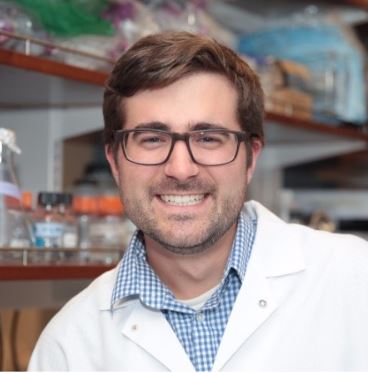
Dr. Devon Lundine, who conducts space radiation research at the Memorial Sloan Kettering Cancer Center. (Source: LinkedIn)..
Dr. Lundine has participated in numerous rounds of the Humans in Space Challenge, “A Global Challenge calling for pioneering startups and researchers that are addressing critical healthcare challenges in Space and on Earth,” and was awarded $30,000 in a 2023 funding round (Global Space Challenge). He participated in NASA’s 2023 PI Launchpad workshop and was a 2022-2023 participant in a NASA STAR (Spaceflight, Technology, Applications, & Research) cohort.
Dr. Lundine has worked with the Odyssey SpaceWorks team as they’ve developed their space medicine platform. His research has launched on one of their initial missions, saying that “Odyssey is allowing us to shave off 2 years of research effort. And I can just focus on the science,” (Odyssey SpaceWorks).
Dr. Lundine’s growing space medicine portfolio is a prime example of the robust space medicine community in New York. His research partnership with Odyssey SpaceWorks demonstrates the power of academic-private sector collaboration that can make New York’s space medicine sector a nationwide leader.
Columbia University
Columbia University is home to a significant amount of space medicine research, in a range of specialties and focus areas.
A number of the researchers and scientists on this list have participated in innovative studies that developed “Human Organs-on-a-chip platforms for developing countermeasures to space radiation,” (Columbia University, Dr. Gordana Vunjak-Novakovic). An investigation published in 2023 on this work summed up its’ importance by stating that “individualized models of human tissues have potential to provide insights into the effects and mechanisms of radiation during deep-space missions and allow testing of radioprotective measures,” (National Library of Medicine, Modeling the Effects of Protracted Cosmic Radiation in a Human Organ-on-a-Chip Platform, Columbia University).
This work involved researchers and scientists from the Department of Biomedical Engineering, Institute for Cancer Genetics, Center for Radiological Research, and Irving Comprehensive Cancer Center. This research demonstrates the innovation and impact that New York researchers are having in the field of space medicine.
Dr. Gordana Vunjak-Novakovic is a University Professor at the Laboratory for Stem Cells and Tissue Engineering and leads a “laboratory (that) has launched four biotech companies…For her entrepreneurship, she (has) received four NASA awards for patents,” (Columbia University). She is the Principal Investigatorfor the organs-on-a-chip research, and has utilized this platform in other areasof regenerative medicine research.
Dr. Vunjak-Novakovic was also the Principal Investigator for MORPH: Multi-Organ Repair Post-Hypnoxia. This investigation “translate(s) recent advances in bioengineering into a platform providing physiological connections of human tissues by vascular flow that can be automated and allow long-term (6 months or more) studies of systemic effects of stressors,” (NASA). NASA was interested in this research because “planned studies of the effects of hypoxia and tissue protective factors may translate into the development of countermeasures for space exploration,” (NASA).
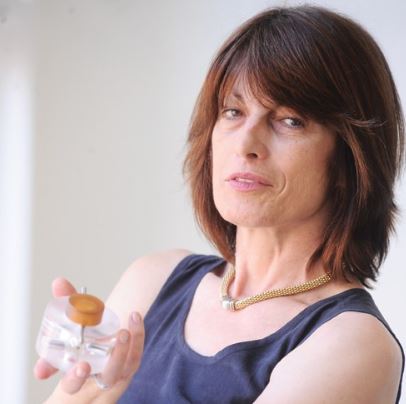
Dr. Gordana Vunjak-Novakovic, who conducts organ-on-tissue research with numerous space medicine applications. Source: Columbia University.
Dr. Guy Garty & Dr. David J. Brenner assisted in providing “X-ray and proton radiation exposures” for an experiment titled “Silk Composite Biomaterials for Shielding Medications in Space” (NASA Techport, pg 2). This study explored how the “silk and the additives have potential to provide protection for medications against environmental stresses, such as elevated temperature and radiation. Such protection would ensure that medications retain bioactivity and are safe to use by the space crew during a long duration mission,” which is an incredibly important line of inquiry (NASA Techport). Drs. Garty & Brenner also participated in the team that developed the organ-on-a-chip program for developing countermeasures to space radiation. Dr. Brenner also serves as the Director of the Center for Radiological Research.

Drs. Guy Garty (L) and David J. Brenner (R), who have participated in a pair of space medicine research projects. Image source: Columbia University.
Postdoctoral Research Scientist Daniel Naveed Tavokol with the Laboratory for Stem Cells and Tissue Engineering has participated in a number of NASA and space related projectsover the course of his career, including a multi-month radiation study at the Brookhaven National Laboratory on Long Island. He also participated in the team that developed the organ-on-a-chip program for developing countermeasures to space radiation.
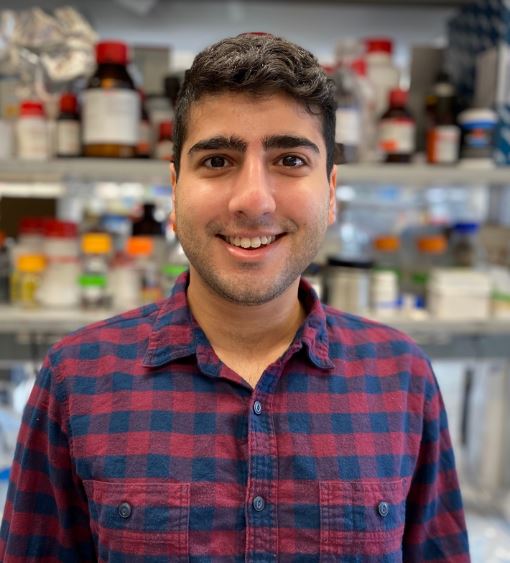
Postdoctoral Research Scientist Daniel Naveed Tavakol, who has conducted numerous radiation-focused space medicine research projects. Image source: Columbia University.
Assistant Researcher Naresh Deoli with the Center for Radiological Research authored a 2018 study titled “Irradiation effects of MeV protons on dry and hydrated Brassica rapa seeds,” (Deoli, Naresh, Life Sciences in Space Research. August 2018). This study acknowledged the strong focus on radiation impacts on astronauts in the space medicine field, and instead focused on “radiation effects on potential crop plants. We studied Brassica rapa to assess the tolerance of seeds and seedlings to radiation by exposing…B. rapa seeds to 1, 2 and 3 MeV proton ions of various fluences and examined the effect on germination and root growth,.” (Researchgate). His results showed that the “seed coat represents a valuable natural radiation protection and that low energy protons, the prevailing solar radiation, are suitable for studying radiation effects in seeds and plants,” a potentially significant finding that could inform numerous future areas of research (Researchgate). Researcher Deoli was also a participant in the team that developed the organ-on-a-chip program for developing countermeasures to space radiation.
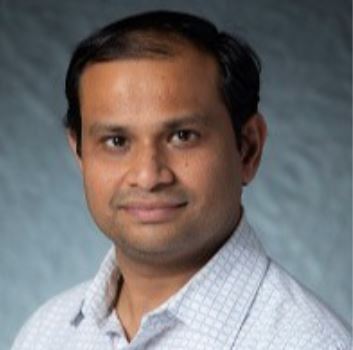
Research Assistant Naresh Deoli, who studies the impact of space radiation on crop seeds. Image Source: LinkedIn.
A number of other members of the Columbia Biomedical Engineering Department contributed to the organ-on-a-tissue research program. Professor Kam Leong uses polymeric biomaterials as well as tissue and stem cell engineering, with a general focus on drug delivery and regenerative medicine. Postdoctoral Fellow Siyu He believes that biomedical engineering “offers a unique perspective for understanding nature and leveraging technology to improve patient outcomes.” Masters Student Leah Andrews is “interested in using tissue engineering, organ-on-chips, and stem cell models to understand developmental biology and apply this information to transplant and regenerative medicine.”

Professor Kam Leong, Postdoctoral Fellow Siyu He, and Masters Student Leah Andrews are members of the Columbia Biomedical Engineering Department that all participated in space medicine related organ-on-tissue research.
A number of other members of the Columbia Laboratory for Stem Cells and Tissue Engineering have contributed to the organ-on-tissue research project.
Dr. Sharon Fleischer “designed numerous novel biomaterials mimicking different aspects of the heart and demonstrated their capability to promote the assembly of functional cardiac patches with native-like properties….and developing optogenetic systems to regulate cardiac cell behavior.” Dr. Manuel Tamargo completed his dissertation in Dr. Vunjak-Novokovic’s lab, focusing on how to use stem cell tissues to engineer cardiac muscles. PhD Student Trevor Nash works on “the cardiac team, and is using iPSC-derived cardiac tissue models to study ischemic heart disease.” PhD Student Youngbin Kim focuses on “bridging biological models for disease modeling/drug screening and computational methods such as machine learning with a specific interest in neural and cardiac systems.” PhD Student Martin Liberman was a research assistant in the lab during the organ-on-tissue research project.
PhD Student Roberta Lock conducts “research focused on applying gene editing approaches to stem cells in order to better model and treat cardiovascular diseases.” Postdoctoral Research Student Pamela Graney “uses a multi-tissue platform to model and delineate the contributions of tissue resident immune cells to pre-metastatic niche formation and tumor metastasis.” Research Assistant Derek Ning works to understand the impact of radiation on multi-organ systems. Research Engineer Keith Yeager has “extensive applied experience with machining, 3D printing, printed circuit boards, thermoforming, laser cutting, injection molding, and other fabrication processes.”

The members of Columbia’s Laboratory for Stem Cells and Tissue Engineering that have contributed to the organ-on-tissue program. Clockwise from top left: Dr. Sharon Fleischer, Dr. Manuel Tamargo, PhD Student Trevor Nash, PhD Student Youngbin Kim, PhD Student Martin Liberman, PhD Student Roberta Lock, Postdoctoral Research Student Pamela Graney, Research Assistant Derek Ning, Research Engineer Keither Yeager.
Dr. Andrew Harken from the Columbia Center for Radiological Research was another key contributor to the organ-on-a-tissue research project. His research interests include radiation detector physics, microbeam technologies, and materials property research.
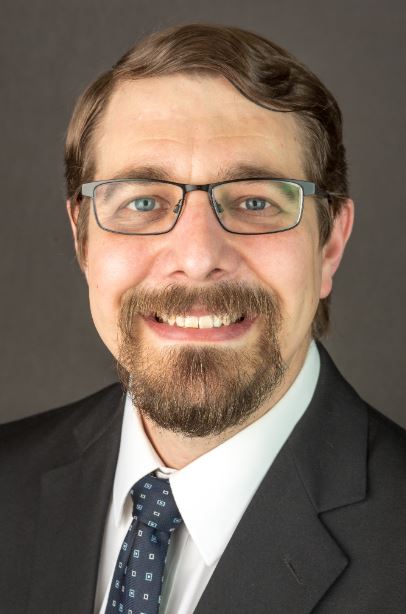
Dr. Andrew Harken with the Center for Radiological Research was a participant in the organ-on-a-tissue project.
A number of other members of the Columbia Institute for Cancer Genetics participated in the organ-on-a-tissue research project as well. Dr. Jessie Brown is the “the Candy and William Raveis Fellow of the Damon Runyon-Sohn Foundation Pediatric Cancer Award where she works on therapeutic resistance in relapsed pediatric leukemias.” Dr. Adolfo Ferrando is an Associate Professor of Pediatrics and Pathology, and “works on the genetic and molecular basis of acute lymphoblastic leukemia using a combination of genomic technologies and biochemical, structural biology and epigenetic analyses.” Dr. Elham Azizi uses novel machine learning techniques to “to characterize the complex populations of interacting cell types in the tumor microenvironment and their underlying circuitry by leveraging cutting-edge single-cell genomic technologies.”

Drs. Jessie Brown (L), Adolfo Ferrando (C), and Elham Azizi (R) all participated in the space medicine focused organ-on-tissue research program.
Dr. Brent Stockwell participated in a 2022 astrobiology study based on the premise that “Lava tubes on Mars hold exciting potential for the preservation of biosignatures, which may survive on geological timescales in these isolated, stable environments. To support the development of future astrobiological mission concepts, we turn to terrestrial lava tubes,” in this case Iceland (ResearchGate. A Study in Blue). This exciting study is another New York contribution to the search for life on Mars.
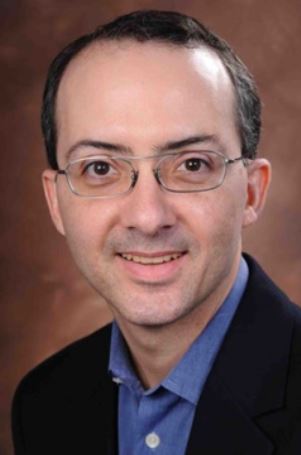
Dr. Brent Stockwell, who participated in a 2022 study exploring the potential for Martian lava tubes to preserve alien biosignatures. Image source: Columbia University.
Dr. Sally Amundson is a “Professor of Radiation Oncology and a faculty member at the Center for Radiological Research at Columbia University,” (Columbia University). Part of her research portfolio includes “Radiation’s influence on breast cancer, including the unique challenges posed by space radiation in long-term manned missions,” (Columbia University). Dr. Amundson also participated in the team that developed the organ-on-a-chip program for developing countermeasures to space radiation.
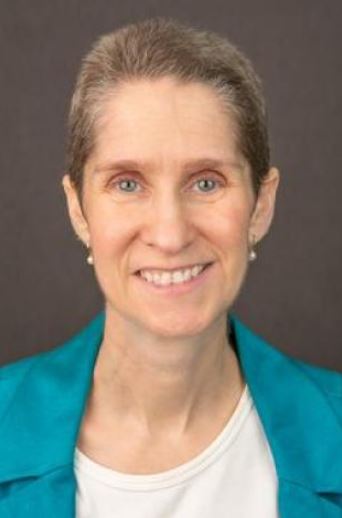
Dr. Sally Amundson, who conducts research on the impacts of space radiation on long duration missions. Image source: Columbia University.
Columbia University and its various departments have no less than 22 current or very recent researchers who are working on some new innovative research in the field of space medicine. Much of this research is focused on understanding or mitigating the impact of harmful space radiation on various human biological systems, a key field of study in the 21st century.
Weill Cornell Medicine
Dr. Christopher Mason with the Weill Cornell Medicine has an extensive portfolio of space-related research.
Dr. Mason participated in a study published in 2025 titled “Methodologies for Mitochondrial Omic Profiling During Spaceflight”, based on data showing that ”mitochondrial dysfunction is the key regulator associated with increasing health risks associated with spaceflight. This mitochondrial dysfunction can have influence downstream on immune suppression, inflammation, circadian rhythm issues, and more.” (National Library of Medicine). This study focused on how to study these changes in space, ”outlining the current sample collection methods, processing of the samples, and specific analysis…(and) highlight(ing) the different mitochondrial methodologies and challenges involved with research associated with spaceflight,” (National Library of Medicine). This line of inquiry could offer revolutionary insights into how the human body changes during long-term travel in space.
Dr. Mason participated in a 2024 paper that studied “spaceflight impact on risk for small-for-gestational-age infants,,” This study “hypothesize(d) that space stressors could have enduring effects on female health, potentially increasing risks for future pregnancies upon return to Earth, particularly related to small-for-gestational-age (SGA) fetuses,” which is a critically important area of study when the number of women traveling in space for long durations in going to increase in the years ahead (Weill Cornell Medicine.
He participated in a 2024 study that focused on the human microbiome in space, with the paper “characteriz(ing) the main taxa of the human gut microbiota…discussing potential dysbiosis and negative health consequences (from spaceflight)...detail(ing) the microbial changes observed in astronauts during spaceflight, focusing on gut microbiota composition and pathogenic virulence and survival…and (analyzing) how astronaut health may be protected from adverse microbial changes via diet, exercise, and antibiotics,” (National Library of Medicine). Such research could lead to innovative new ways to maximize the dietary benefits that astronauts can obtain in space.
Dr. Mason participated in a study published in July 2024 that focused on omics technologies and analyzed ”published alleles naturally found in human cohorts that have a likely protective effect, which is linked to decreased cancer risk and improved bone, muscular, and cardiovascular health…(and how) research into these protective mechanisms could translate into improved nutrition, exercise, and health recommendations for crew members during deep space missions,” (Nature Communications, July 2024. Analyzing how omics technologies could impact human spaceflight could be a transformative new area of research in 21st century space medicine.
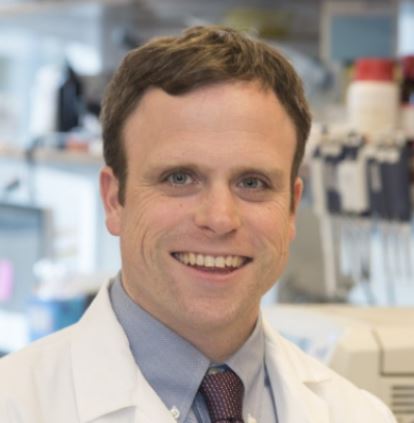
Dr. Christopher Mason with the Weill Cornell Medicine in Manhattan, who has participated in numerous space medicine research projects during his career. Image source: Weill Cornell Medicine Physiology & Biophysics.
Dr. Mason with the Weill Cornell Medicine has been a prolific contributor to numerous space medicine research efforts in recent years that could have profound impacts on how humanity explores the Solar System.
Mt. Sinai Hospital Icahn School of Medicine
Dr. David Goukassian with the The Mt. Sinai Hospital Icahn School of Medicine has built an impressive profile of space radiation research over the course of his career, “studying cardiovascular risks for development of countermeasures during and after long-duration deep space missions,” (Mt. Sinai). The Goukassian Laboratory is a part of the Cardiovascular Research Center at the Icahn School of Medicine at Mount Sinai, with Cardiovascular Space Radiobiology as one of the four key research areas.
Dr. Goukassian’s latest NASA-sponsored research analyzes differences in radiation-induced cardiovascular disease in women and men to better inform therapies for long-duration astronauts His lab employs a number of young scientists and researchers who offer numerous contributions to the field of space radiation research.
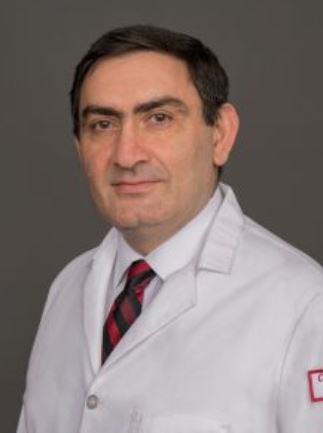
Dr. David Goukassian of the Icahn School of Medicine at Mt. Sinai, where he conducts space radiation research. Image source: Mt. Sinai.
Dr. David Goukassian leads a dynamic team at the Icahn School of Medicine at Mt. Sinai, home to one of the most significant centers of space medicine research in New York and a key contributor to human understanding of the significant impacts of space radiation.
Brookhaven Space Radiation Lab
The NASA Space Radiation Lab exists because “Modern astronauts are spending ever greater amounts of time in space, exposed to the little-understood effects of cosmic radiation. NASA and Brookhaven National Lab have established a joint lab—the NASA Space Radiation Laboratory (NSRL)—on the Brookhaven campus to study the possible effects of this exposure...The research conducted at NSRL seeks to increase the safety of space exploration through radiobiology and electronic device studies. The NSRL uses beams of heavy ions extracted from Brookhaven's Booster accelerator to simulate the high energy cosmic rays found in space. NSRL features state-of-the-art specimen preparation resources, its own beam line dedicated to radiobiology research and space technology studies.” (Source: NASA Space Radiation Lab).
Brookhaven National Lab Medical Scientist Peter Guida is a biologist who has contributed to dozens of research efforts since the early 2000s into the impacts of space radiation on astronauts. He has also conducted public information outreach opportunities about space radiation via Brookhaven’s Science Thursday Youtube series. He is one of many phenomenal scientists, engineers, and biologists at the Space Radiation Lab that are leading New York’s contributions at the cutting edge of space medical research.
New York Stem Cell Foundation
Dr. Kriti Kalpana with the New York Stem Cell Foundation was involved with a research experiment that flew on the Axiom Mission 3 flight that flew from January 18 through February 9, 2024.
According to Dr. Kalpana, “In our experiments, we are studying different types of brain cells: neurons (the vulnerable cells in neurodegenerative diseases) and microglia (immune cells that play a major role in neuroinflammation and ultimately damage the neurons)...previous experiments in mice and astronauts are pointing at increased inflammation in space, we are interested in studying whether this is also true for neuroinflammation, and whether we can therefore better understand how microglia are driving neurodegeneration in disease,” (New York Stem Cell Foundation).
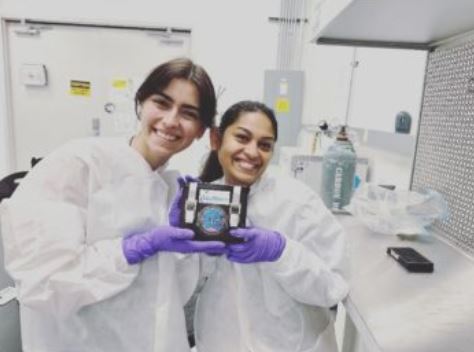
Dr. Kriti Kalpana (R) and colleague Nicolette Pirjanian prepare cells for launch aboard Axiom Mission 3 in January, 2024. Source: The New York Stem Cell Foundation.
Dr. Kalpana joined others in publishing “Establishing Neural Organoid Cultures for Investigating the Effects of Microgravity in Low-Earth Orbit (LEO),” which summarized the novel process they developed to test their samples during the mission.
Dr. Kalpana and her colleagues at the New York Stem Cell Foundation and across the country are pushing the boundaries of space-based medical research. Her efforts are expanding our knowledge of how space travel impacts the human brain and how those lessons can be applied to diseases here on Earth.
University of Rochester
Dr. M. Kerry O’Banion has been with the University of Rochester in the Finger Lakes Region since 1987, holding numerous positions with the Departments of Medicine & Biochemistry and Neurology, Neurobiology, and Anatomy. He has made multiple contributions to the field of space medicine over his career, with a focus on understanding the impacts of space travel on the human brain.
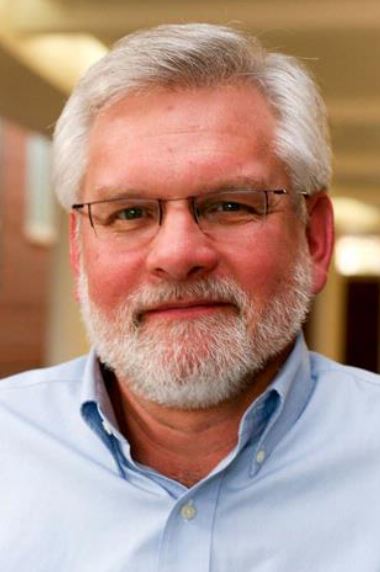
Dr. M. Kerry O’Banion, who conducts space-focused neurology-based research at the University of Rochester. Image source: University of Rochester Medical Center.
In 2015 Dr. O’Banion received a $1.8 million NASA grant to study “whether extended deep space travel places astronauts at risk for neuro-degenerative diseases like Alzheimer’s,” (University of Rochester). This was built upon Dr. O’Banion’s earlier work “showing that exposure to a particular form of space radiation called high-mass, high-charged particles caused biological and cognitive changes in mice that indicated an accelerated risk for the development of Alzheimer’s disease,” (University of Rochester). His work was aimed at understanding the cellular mechanisms at play in the brain when exposed to space radiation and how this was similar to a neurodegenerative disease like Alzheimer's.
In 2020 Dr. O’Banion was awarded another $1.8 million grant to “explore the effect space travel has on the immune system and bone marrow, and how that impacts brain function,” (University of Rochester). He worked with fellow University of Rochester researcher Dr. Laura Calvi to understand how changes in bone marrow can help scientists understand changes occurring in the brain when astronauts are exposed to space radiation.
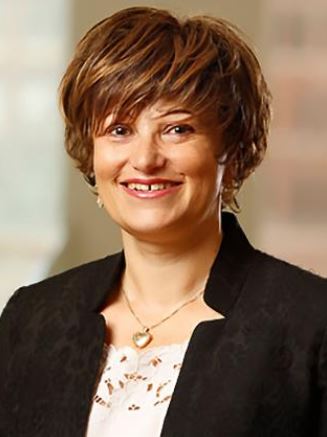
Dr. Laura M. Calvi is the leader of the Cancer Microenvironment Research Program at the Wilmot Cancer Center at the University of Rochester. She partnered with Dr. Kerry O'Banion on the impacts space travel has on the immune system and bone marrow.
Dr. Calvi summed up the importance of their work well when she stated that “...as (a) scientist, space exploration really represents the ultimate frontier. I'm super excited to be able to participate in this and maybe try to lower some thresholds that will allow humanity to do space travel…This type of research has so many implications, even for us on Earth,” (University of Rochester).
Dr. O’Banion and his colleagues have built a considerable portfolio of space medicine research at the University of Rochester, bringing the Finger Lakes Region to the forefront of critical space exploration research.
New York a Space Medicine Hub
This report has detailed a wide range of space medicine research occurring at universities and medical centers across New York. Much of this critical research has been on the impact harmful space radiation has on various aspects of human biology, but there are also fascinating projects in astrobiology and understanding microgravity impacts.
All of this work is critical in sending humans deeper into space and expanding the circle of human habitation throughout the Solar System. This evolution will have tremendous economic and human impacts, including from the many spinoffs and secondary medical applications that come from this type of research.
New York is at the center of it all. With powerhouse universities and research centers across the state, New York is a clear leader in the critically important 21st century field of space medicine.